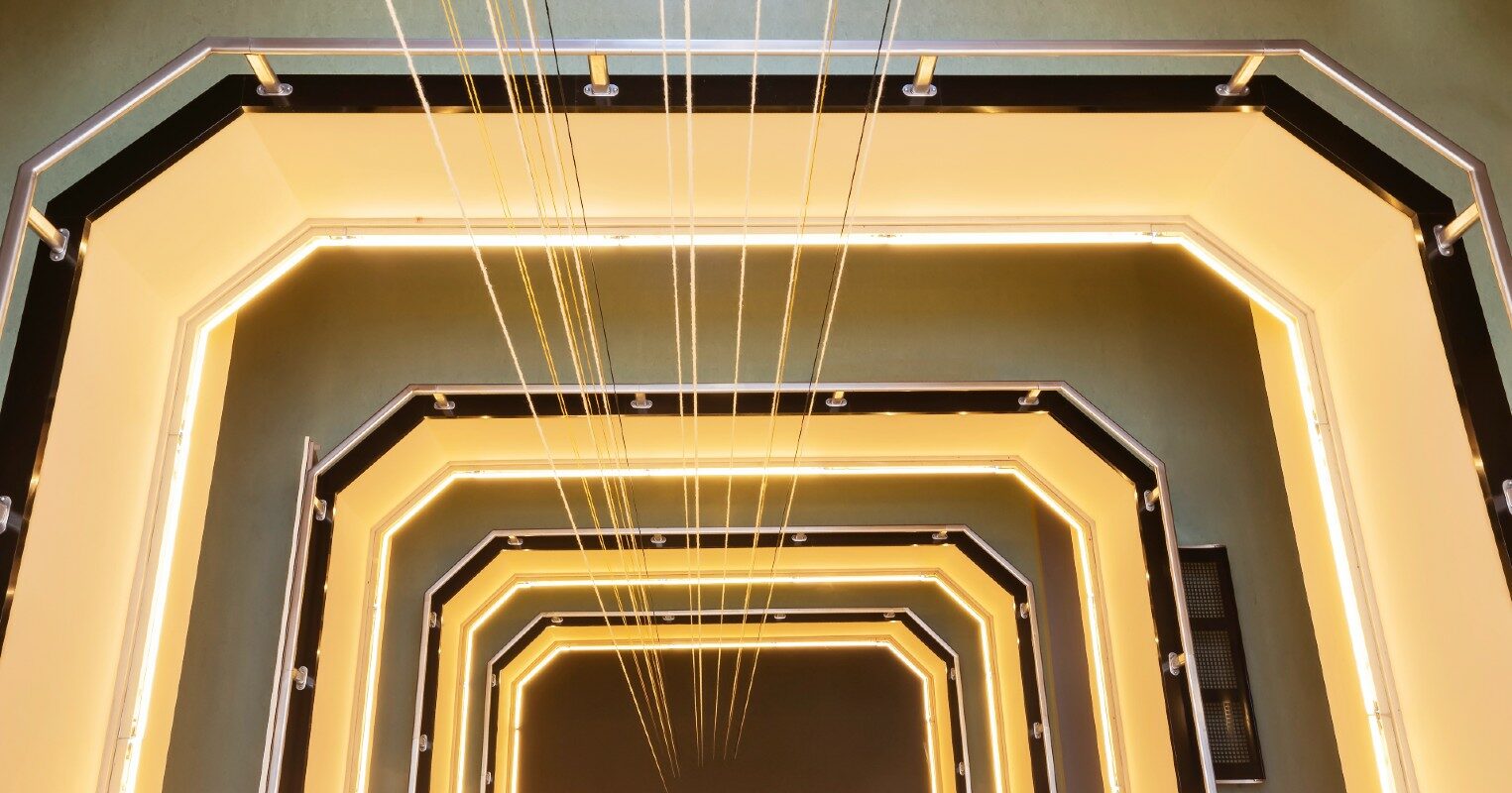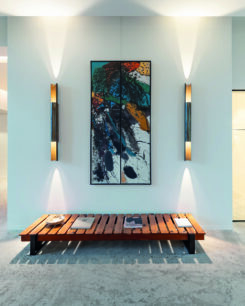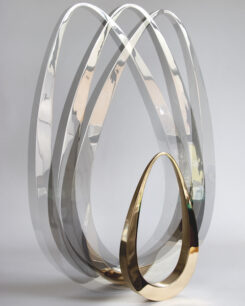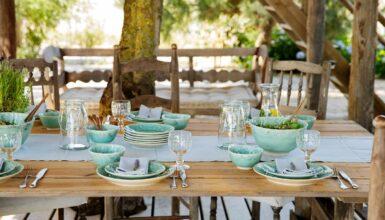Sommaire
Fred Sandback’s archives journey from New York to Brussels
The “Fred Sandback” exhibition at the CAB Foundation in Brussels is an event that has been in the making for over two years. It is a valuable opportunity to see the work of the important American sculptor, which is still rare in Belgium, where he is represented by the Belgian gallery Greta Meert. The involvement of the artist’s widow, Amy Baker Sandback, keeper of his archives, and the participation of the American gallery David Zwirner now offer the opportunity to fully immerse oneself in his practice.
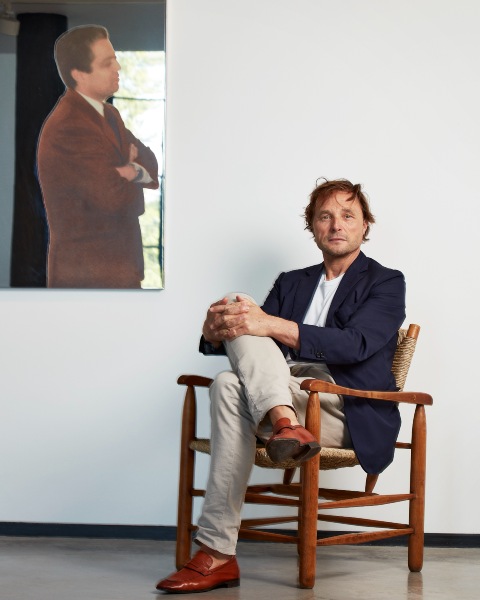
Fondation CAB/Photo: Antoine Lippens, 2021
Inaugurated in 2012, the CAB Foundation is the creation of real estate businessman and major Belgian collector Hubert Bonnet. Since the opening of this exhibition space and artists’ residence in a renovated 1950s building just a stone’s throw from the ponds of Ixelles, a sought-after disctrict of Brussels, the place has become a meeting place of choice for art lovers and collectors.
Specialized and renowned for its exhibitions of minimal and conceptual art, the CAB Foundation has expanded its field of action in the south of France, with the renovation by architect Charles Zana of a superb building also dating from the mid-20th century. In 2021, the CAB Foundation opened its second address in Saint-Paul de Vence, near the Maeght Foundation and not far from other renowned French art centres such as the Carmignac Foundation and the wine estates of Château La Coste and Commanderie de Peyrassol. Eventually, the French CAB Foundation will house a selection of works belonging to its founder Hubert Bonnet.

Fred Sandback’s trompe l’œil sculptures: wires stretched in space
A well-known artist who questions the links between art and architecture
Rightly regarded as the “master of the line” and humorously calling himself a “conceptual sculptor”, Fred Sandback began his career at a young age. Initially trained in philosophy, then at the Yale School of Art and Architecture, Fred Sandback moved freely in the art world.
After an initial presentation of his work in the studio of the artist and designer Donald Judd, he befriended the sculptor Richard Serra, another emblematic figure of the 1960s. This was a period marked by the beginnings of land art and the artistic revival in the United States, during which industrial materials were used by creators. The next generation, such as the British artist Richard Long, drew on natural materials such as stone.
In contrast to the heavy metals and wood favoured by this first generation of minimal and conceptual artists, Fred Sandback prefers the lightness of wool yarn. This material would guide him throughout his successful career, beginning with his first exhibition at the eminent Konrad Fischer Galerie at the age of just 26.
In the ‘Fred Sandback’ exhibition, the large volumes of the Belgian CAB Foundation form the basis for some of this work, which is based on the use of thread and the sense of fullness and emptiness it creates. This is art that is concerned with the notion of space in all its three dimensions and that can only be appreciated with the naked eye.
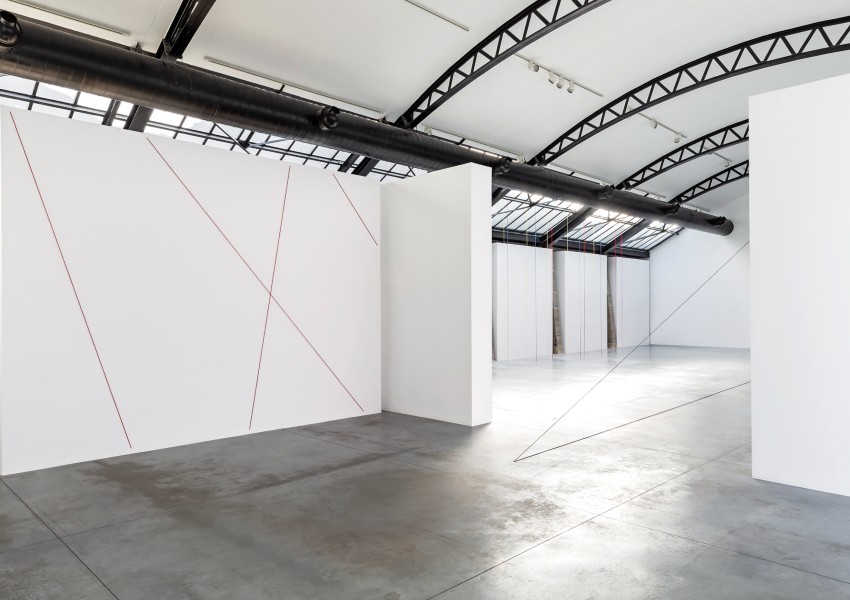
Fred Sandback Archive/Courtesy David Zwirner and Fondation CAB/Photo: Laurent Brandajs, 2021
Line and drawing at the heart of Fred Sandback’s working process
To create his sculptures, which are almost simply made of these threads, coloured, acrylic, elastic or even steel, in order to maintain the illusion of thin, straight sculptures without structure, floating in space from wall to wall or standing vertically from floor to ceiling, the artist draws. His drawings are accompanied by sketches and explanatory texts so that galleries, museums and collectors can “activate” his works: assemble them and place them in the location of their choice.
These manuals, with precise instructions for hanging works (“protocols” in art parlance), are now used by Amy Baker Sandback to meticulously install Sandback’s exhibitions in keeping with the artist’s original vision. A video at the end of the exhibition at the CAB Foundation catalogues the artist’s principles and pays tribute to his playful and utopian spirit.
Drawing is at the centre of many practices in minimal and conceptual art. This is also demonstrated by the work of Sol LeWitt, an American contemporary of Fred Sandback, who is the subject of a retrospective exhibition at the Jewish Museum of Belgium until the 1st of May 2022: “Sol LeWitt. Wall drawings, works on paper, structures (1968-2002)”.
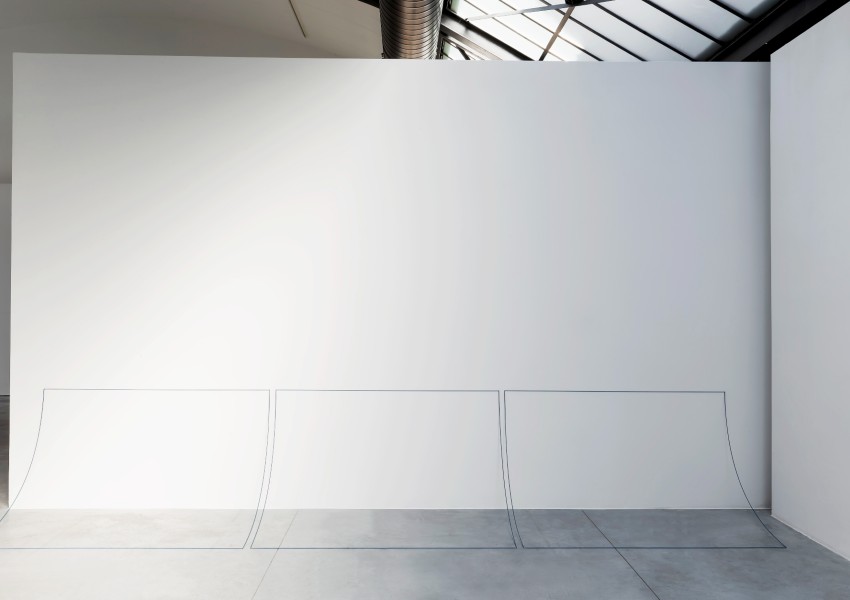
Fred Sandback Archive/Courtesy David Zwirner and Fondation CAB/Photo: Laurent Brandajs, 2021
The architecture of the Belgian Radio House as an exhibition space
Of the 14 “Fred Sandback” pieces at the CAB Foundation, some historic, some never before shown to the public and some from private collections, one can be seen outside, just a stone’s throw from the foundation, in a public place.
Like Fred Sandback, Amy Baker Sandback is an architecture enthusiast and was keen to visit some iconic buildings when she visited Brussels in preparation for the exhibition. It was when she discovered the building of the former Maison de la Radio de Belgique located on Place Flagey that she was seduced by the place. At the invitation of Hubert Bonnet, she decided to present an exclusive 20-metre high work in the stairwell of this administrative building surrounded by large windows. An emblem of modernist architecture designed by the Brussels architect Joseph Diongre in 1938.
A happy marriage between art and everyday architecture, which Fred Sandback’s freely complex and surprisingly accessible work has aspired to since its inception.
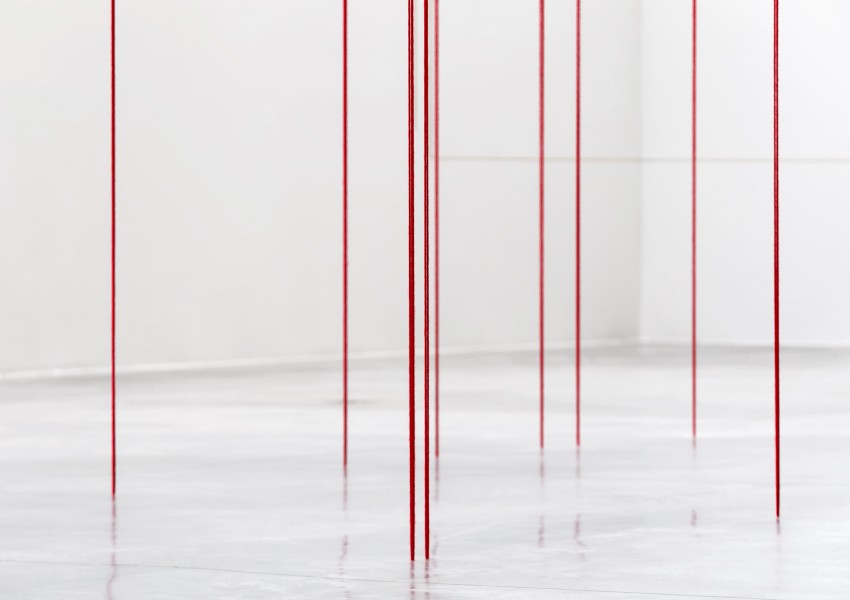
Fred Sandback Archive/Courtesy David Zwirner and Fondation CAB/Photo: Laurent Brandajs, 2021
CAB Foundation
Rue Borrens, 32-34, 1050 Ixelles
info@fondation.com
foundationcab.com
